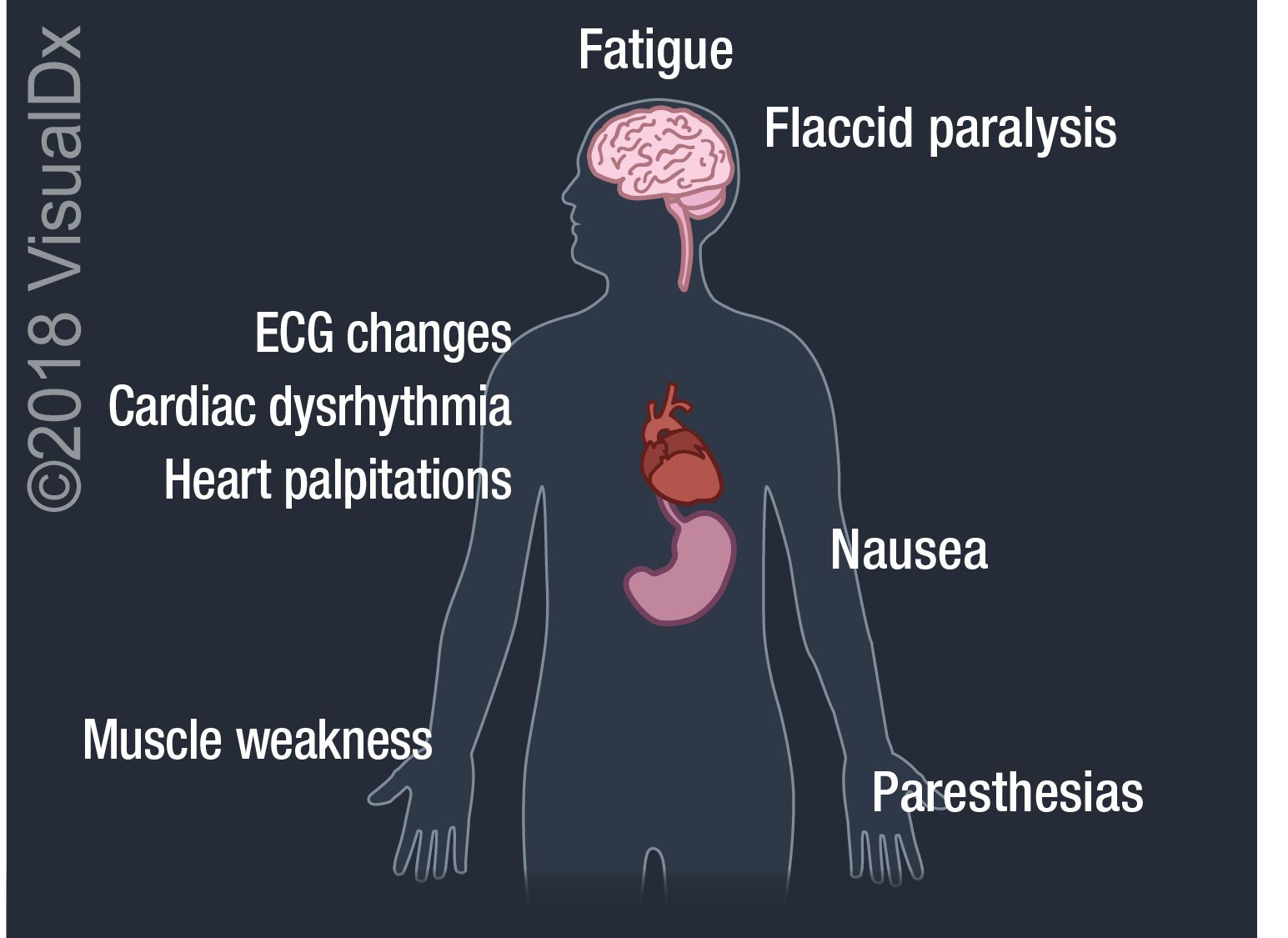Article
Image IQ: Heart palpitations and nausea
An 83-year-old woman with kidney disease was brought to the ED for heart palpitations and shortness of breath. What's your diagnosis?
Image courtesy of VisualDx.

An 83-year-old woman with kidney disease was brought to the ED for heart palpitations and shortness of breath. He reported that for the last day, she had not eaten much due to nausea and had been noticeably fatigued, complaining of muscle weakness. She was feeling so ill that she missed her dialysis appointment late yesterday. Her ECG showed ST elevations and a widening QRS complex.
The patient is showing symptoms of:
A. Hyperkalemia
B. Myocardial infarction
C. Metabolic acidosis
D. Pulmonary embolism
Use the differential builder in VisualDx to aid in your diagnosis.
See the next page for the answer.
The correct answer is A) Hyperkalemia
Hyperkalemia is a condition of elevated serum potassium concentration (> 5.5 mmol/L) due to increased potassium release from cells, excess potassium intake, or more commonly, reduced excretion of urinary potassium. This may be caused by excessive load (administration or intake of potassium) with potassium salts, blood transfusions (not fresh), or extreme intake of water treated with potassium-based water softener; impaired excretion, as seen in renal failure; or use of potassium-sparing diuretic drugs, NSAIDs, angiotensin-converting enzyme (ACE) inhibitors, aldosterone-suppressing therapies, or other drug-induced effects (such as digitalis toxicity). Other causes include Addison disease, decreased insulin with high osmolality, acidosis (eg, diabetic ketoacidosis), dehydration, hyperventilation, pregnancy, and malignant hyperthermia.
Signs and symptoms include muscle weakness, paralysis, hypothermia, and cardiac abnormalities (irregular conduction and arrhythmias).
ECG changes of hyperkalemia do not reliably correlate with potassium levels, but mild elevation (5.5-6.5 mmol/L) may cause peaked T waves, shortened QT interval, and ST-segment depression.
At higher levels of potassium (< 8.0 mmol/L), the ECG may demonstrate peaked T waves, PR prolongation with decreased P waves, and widening QRS. At potassium levels > 8.0 mmol/L, P waves may be absent, with progressively widening QRS, and intravesicular / fascicular / bundle branch block development, progressing to a sine wave pattern, followed by ventricular fibrillation or asystole. It is important to note that approximately 50% of patients do not have ECG changes even with serum potassium > 6.0 mmol/L, however. Still, the absolute level of serum potassium is important in predicting morbidity and mortality, along with the rate at which it is reached and how long the patient remains hyperkalemic.
Pseudohyperkalemia can be caused by improper blood drawing techniques, hemolysis, tourniquet use, and clenched fists.
In addition to acquired hyperkalemia, hyperkalemic periodic paralysis is an autosomal dominant inherited disorder that causes fluctuating potassium levels and episodic muscle weakness when potassium levels are high.
For more information about hyperkalemia and ICD-10 codes, visit VisualDx.





